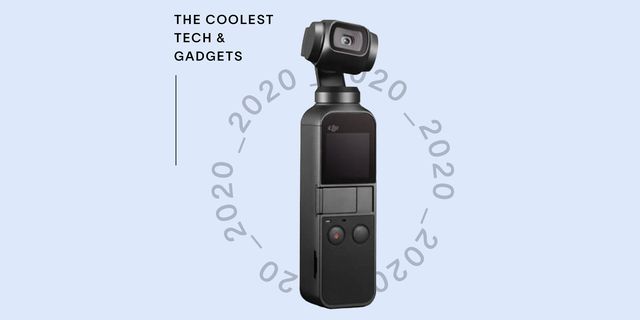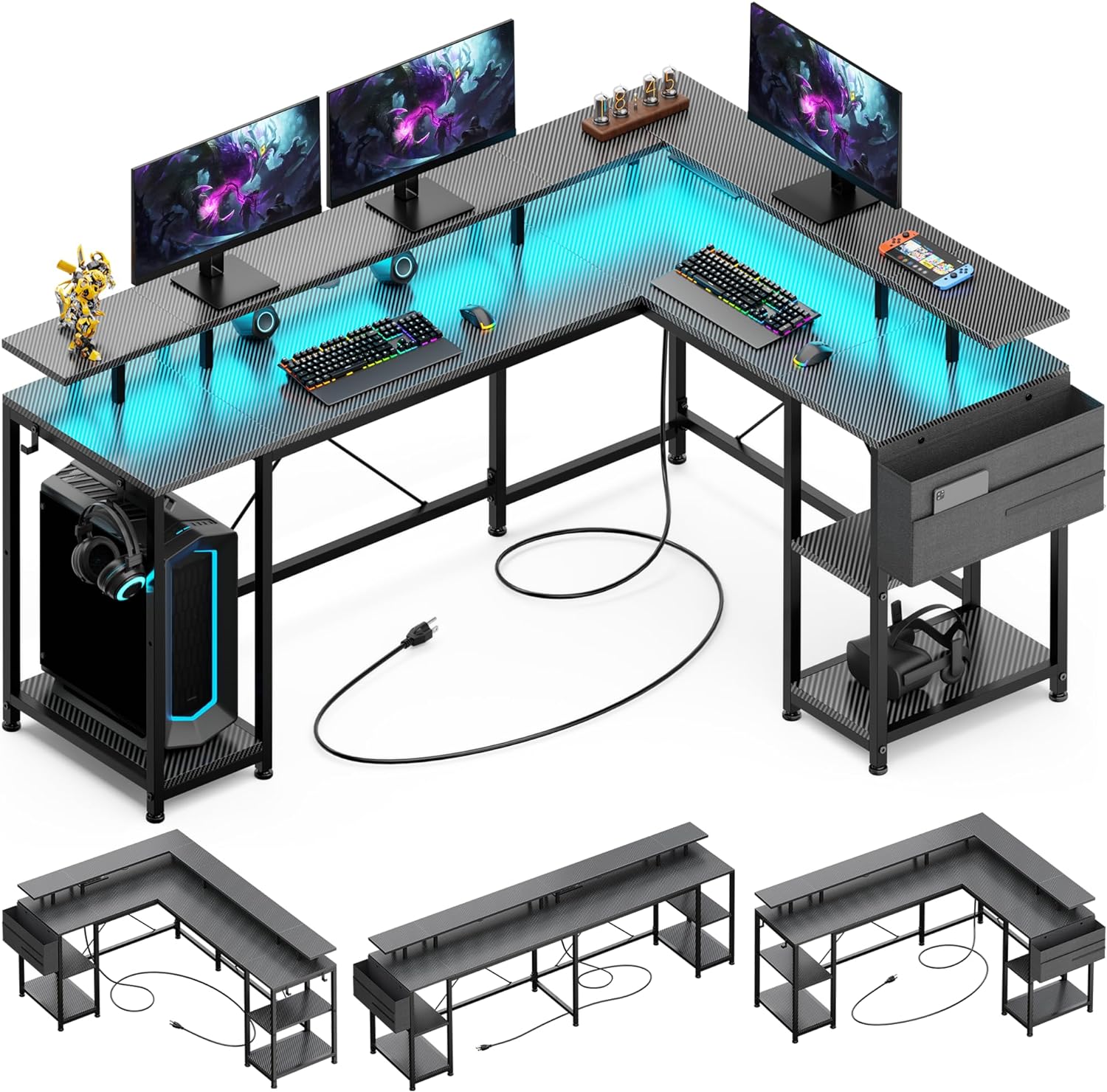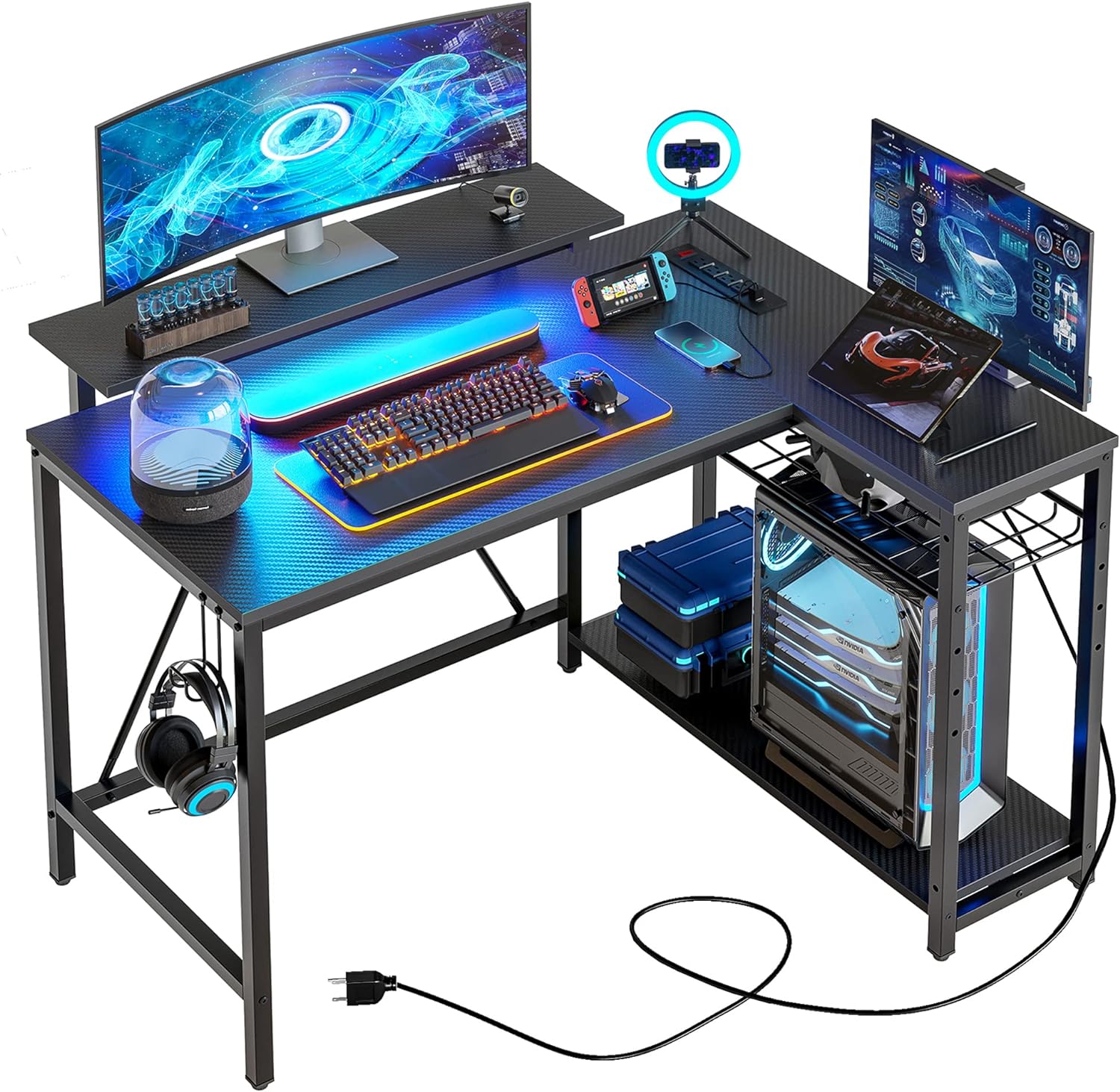Are you ready to embark on a thrilling journey into the world of cutting-edge technology and innovative gadgets? Look no further than our Electronics & Gadgets section, where you can stay up-to-date with the latest advancements in the tech world. From state-of-the-art smartphones to mind-blowing virtual reality experiences, we’ve got it all covered. Get ready to explore a multitude of fascinating gadgets that will not only enhance your life but also leave you in awe of human innovation. Get ready to unlock a world of endless possibilities with our Electronics & Gadgets section.
1. Smartphones and Mobile Devices
1.1. Introduction to the latest smartphone models
In the fast-paced world of technology, smartphones are constantly evolving and improving. Manufacturers are always racing to release the latest models that boast cutting-edge features and advancements. From brands like Apple, Samsung, and Google, the market is flooded with options that cater to every consumer’s needs and preferences. These smartphones come with impressive specifications such as high-resolution displays, powerful processors, and state-of-the-art cameras. Whether you’re a photography enthusiast, a gaming lover, or a productivity seeker, there’s a smartphone out there designed just for you.
1.2. Advancements in mobile operating systems
Behind the scenes of these smartphones, lies the heart of their functionality – the operating system. Mobile operating systems have come a long way in terms of performance, user interface, and security. Companies such as Apple with iOS, Google with Android, and Microsoft with Windows have constantly refined their operating systems to provide a seamless and intuitive experience for users. The latest versions of these operating systems are packed with features and enhancements like improved multitasking, advanced privacy settings, and intelligent virtual assistants. With every update, these operating systems become more efficient, user-friendly, and capable of handling complex tasks.
1.3. Innovative features and functionalities in smartphones
Smartphone manufacturers are continually pushing the boundaries of innovation, adding new features and functionalities that enhance the user experience. One such feature is facial recognition, which allows you to unlock your phone with just a glance. Another popular innovation is the integration of fingerprint sensors, making it even more convenient and secure to unlock your phone and authenticate payments. Additionally, smartphones now come equipped with advanced cameras that boast features like optical zoom, image stabilization, and artificial intelligence for scene optimization and object recognition. Moreover, smartphones are becoming more durable and waterproof, ensuring that they can withstand the rigors of daily life.
1.4. Emerging trends in mobile gaming
Mobile gaming has become a massive industry, and smartphones are at the forefront of this revolution. The gaming capabilities of smartphones have significantly improved in recent years, with powerful processors, high-resolution displays, and advanced graphics rendering. Game developers are now creating immersive and visually stunning games specifically designed for smartphones. Additionally, cloud gaming and streaming services are gaining popularity, allowing users to play high-quality games without needing powerful hardware. The rise of augmented reality (AR) and virtual reality (VR) in gaming also presents exciting opportunities for smartphone users to experience games in new and immersive ways.
1.5. Impact of 5G on mobile devices
The advent of 5G technology has the potential to revolutionize the way we use smartphones and mobile devices. With its significantly faster speeds and lower latency, 5G enables seamless streaming, rapid downloads, and real-time communication. It opens up avenues for technologies like augmented reality, autonomous vehicles, and smart cities. However, the full potential of 5G is yet to be realized, as it requires widespread infrastructure development and compatibility in devices. But as it becomes more accessible, we can expect smartphones and mobile devices to take full advantage of the capabilities that 5G offers, creating a more connected and immersive mobile experience.
2. Wearable Technology
2.1. Overview of wearable gadgets and devices
Wearable technology, also known as wearables, refers to electronic devices or gadgets that can be worn on the body as accessories or embedded in clothing. These devices are designed to enhance various aspects of our lives, including health and fitness tracking, communication, and entertainment. The wearable technology market has expanded rapidly in recent years, with the emergence of fitness trackers, smartwatches, smart clothing, and augmented reality headsets. These wearables offer a range of features and capabilities that make them indispensable companions in our daily lives.
2.2. Fitness trackers and smartwatches
Fitness trackers and smartwatches have become immensely popular due to their ability to monitor and track various aspects of our health and well-being. Fitness trackers, typically worn on the wrist, can monitor your heart rate, track your steps taken, calories burned, and even analyze your sleep patterns. Smartwatches, on the other hand, offer a plethora of features beyond fitness tracking. They can display notifications from your smartphone, enable mobile payments, provide GPS navigation, and allow you to control music playback. The combination of fitness tracking capabilities and smart features makes these wearables invaluable for maintaining an active and connected lifestyle.
2.3. Fashion-forward technology: Smart clothing and accessories
Advancements in technology have given rise to smart clothing and accessories that seamlessly integrate technology into our everyday apparel. Smart clothing is equipped with sensors and modules that monitor a range of physiological data, including heart rate, body temperature, and even muscle activity. These garments can provide real-time feedback and analysis, allowing athletes and fitness enthusiasts to optimize their performance. Additionally, accessories like smart glasses and smart jewelry offer features such as notifications, fitness tracking, and even augmented reality experiences. These fashion-forward tech wearables not only look stylish but also enhance our daily lives with their functionality.
2.4. Healthcare applications of wearables
Wearable technology has also made significant strides in the healthcare industry, revolutionizing patient monitoring and remote care. Wearable medical devices can monitor vital signs, detect irregularities, and deliver data to healthcare professionals in real-time, enabling early intervention and personalized treatment. For example, wearable ECG monitors can provide continuous electrocardiogram readings, alerting individuals to potential heart abnormalities. Additionally, smart insulin pumps and glucose monitors can assist individuals with diabetes in managing their condition more effectively. Wearables have the potential to improve patient outcomes, enhance the quality of care, and reduce healthcare costs.
2.5. Virtual and Augmented Reality headsets
Virtual reality (VR) and augmented reality (AR) headsets have gained immense popularity in recent years, offering immersive experiences that transport users to virtual worlds or blend digital information with the real world. VR headsets provide an entirely virtual environment, creating a 360-degree visual and auditory experience. On the other hand, AR headsets overlay digital information onto the real world, enhancing our perception and interaction with the environment. These headsets are not limited to gaming; they have expanded to applications in education, training, healthcare, and even enterprise solutions. Wearable devices that enable VR and AR are transforming the way we visualize and interact with digital content, opening up a world of possibilities.

This image is property of hips.hearstapps.com.
3. Home Automation and Smart Devices
3.1. Smart speakers and voice assistants
The concept of home automation has gained momentum with the introduction of smart speakers and voice assistants. These devices, powered by artificial intelligence, allow you to control various aspects of your home using voice commands. Whether it’s playing your favorite music, adjusting the lights, or setting reminders, smart speakers have become an integral part of many households. With voice assistants like Amazon’s Alexa, Apple’s Siri, and Google Assistant, you can have a virtual personal assistant that responds to your every command, making your home smarter, more efficient, and more convenient.
3.2. Connected appliances and home security systems
Home automation goes beyond voice commands; it involves connecting and controlling various appliances and systems in your home through a central hub or smartphone app. Connected appliances, such as smart refrigerators, washing machines, and thermostats, can be managed remotely, providing convenience and energy efficiency. Home security systems have also integrated into the smart home ecosystem, allowing you to monitor your home through cameras, receive real-time alerts, and control access to your property. These advancements provide enhanced safety, comfort, and peace of mind for homeowners.
3.3. Energy-efficient solutions for smart homes
One of the significant benefits of home automation is the ability to create energy-efficient homes. Smart thermostats can learn your preferences and adjust the temperature accordingly, optimizing energy consumption. Connected lighting systems can automatically adjust brightness and turn off when not in use, reducing unnecessary electricity usage. Additionally, smart power outlets and energy monitors provide insights into your energy consumption, allowing you to make informed decisions about energy conservation. The integration of smart devices into the home enables homeowners to reduce their carbon footprint, lower utility bills, and contribute to a greener future.
3.4. Integration of AI and machine learning in home automation
Artificial intelligence and machine learning play a crucial role in making home automation more intelligent and intuitive. Through the analysis of data and patterns, smart devices can learn and adapt to your preferences and routines. AI-powered virtual assistants can anticipate your needs and provide personalized recommendations. Machine learning algorithms can optimize energy consumption, automate tasks, and even detect anomalies in home security. As AI and machine learning continue to advance, the possibilities for smart home automation are endless.
3.5. Future prospects and challenges in smart home technology
The future of smart home technology looks promising, with advancements in connectivity, device interoperability, and AI-driven automation. As more devices become smart and interconnected, the ability to control and monitor our homes seamlessly will continue to expand. However, there are challenges in terms of data privacy, security vulnerabilities, and ensuring compatibility between different manufacturers’ devices. The industry is actively addressing these concerns, implementing robust security protocols and standards. With ongoing innovation and collaboration, smart home technology will continue to shape the way we live and interact with our living spaces.
4. Internet of Things (IoT)
4.1. Introduction to IoT and its significance
The Internet of Things (IoT) refers to the network of interconnected devices that communicate with each other and exchange data. These devices, embedded with sensors, processors, and connectivity capabilities, can range from everyday objects like appliances and wearables to industrial machinery and infrastructure. The significance of IoT lies in its ability to collect and analyze data, enabling smarter decision-making, improving efficiency, and enhancing our quality of life. IoT applications span various domains, including smart cities, healthcare, agriculture, and transportation, among others.
4.2. Smart city initiatives and IoT applications
Smart city initiatives leverage IoT technology to create more efficient and sustainable urban environments. IoT devices and sensors collect data on various aspects such as traffic flow, air quality, waste management, and energy consumption. This data is then analyzed to optimize urban services, improve infrastructure planning, and enhance the quality of life for residents. For example, smart parking systems use sensors to guide drivers to available parking spaces, reducing traffic congestion. IoT-enabled street lighting systems can adjust brightness based on real-time conditions, reducing energy waste. The integration of IoT in smart city initiatives aims to create safer, greener, and more livable cities.
4.3. Connected healthcare solutions
IoT has significant implications for healthcare, revolutionizing patient care, remote monitoring, and disease management. Wearable medical devices can transmit real-time patient data to healthcare providers, enabling timely interventions and personalized treatment. Connected healthcare solutions can also improve patient adherence to treatment plans and provide better patient-doctor communication. Additionally, IoT devices like smart pills can track medication adherence, ensuring patients take the right dosage at the right time. The ability to collect and analyze vast amounts of healthcare data through IoT has the potential to transform the healthcare industry, improving patient outcomes and reducing healthcare costs.
4.4. Industrial IoT and its impact on productivity and efficiency
Industrial IoT (IIoT) refers to the application of IoT technology in industrial settings, enabling the connectivity and automation of machinery, processes, and supply chains. IIoT allows for real-time monitoring, analysis, and control of industrial assets, optimizing production, reducing downtime, and improving overall efficiency. For example, predictive maintenance systems use IoT sensors to monitor equipment performance and predict failures, allowing maintenance to be performed proactively, minimizing downtime. IIoT also enables better inventory management, supply chain optimization, and enhanced worker safety. The adoption of IIoT is transforming industries such as manufacturing, logistics, and energy, leading to increased productivity and competitiveness.
4.5. Security concerns and data privacy in IoT
While IoT holds tremendous potential, there are concerns regarding security vulnerabilities and data privacy. IoT devices, especially those with limited processing capabilities, may have weaker security measures, making them susceptible to cyberattacks. Insecure IoT devices can be exploited to gain access to networks or compromise sensitive data. Additionally, the collection and storage of vast amounts of data through IoT raise concerns about data privacy and ownership. The industry is working towards addressing these challenges by implementing robust security protocols, educating users about best practices, and advocating for regulations that protect user privacy. Achieving a secure and trusted IoT ecosystem is crucial for maximizing the benefits of this transformative technology.

This image is property of hips.hearstapps.com.
5. Artificial Intelligence and Machine Learning
5.1. Advancements in AI and ML algorithms
Artificial intelligence (AI) and machine learning (ML) algorithms have revolutionized various industries by enabling machines to learn and perform tasks without explicit programming. Advancements in AI and ML algorithms have led to breakthroughs in areas such as natural language processing, computer vision, and predictive analytics. Deep learning, a subset of ML, has enabled the development of neural networks capable of processing vast amounts of data and making complex predictions. These algorithms have paved the way for intelligent systems that can understand, learn, and adapt to the world around them.
5.2. AI-powered robotics and automation
AI and ML have powered the development of robots and automation systems that can perform tasks traditionally done by humans. Robotic automation is being deployed in industries such as manufacturing and logistics, increasing efficiency, and reducing costs. AI-powered robots can perform complex tasks with precision and accuracy, improving productivity and quality control. Additionally, they can adapt to dynamic environments, learn from their experiences, and make decisions in real-time. As AI continues to advance, we can expect to see robots taking on increasingly sophisticated and specialized roles in sectors such as healthcare, agriculture, and exploration.
5.3. Natural Language Processing and voice recognition
Natural Language Processing (NLP) is a branch of AI that focuses on enabling computers to understand and interact with human language. NLP powers voice assistants like Siri, Alexa, and Google Assistant, allowing users to communicate with their devices naturally. These voice recognition systems can understand spoken commands, respond with relevant information, and perform tasks such as setting reminders or playing music. NLP also enables the development of chatbots, capable of engaging in human-like conversations with customers and providing automated customer support. The advancements in NLP have made human-computer interaction more effortless and intuitive, enhancing user experiences in various applications.
5.4. AI applications in various industries
AI has found applications in a multitude of industries, transforming the way tasks are performed and decisions are made. In finance, AI-powered algorithms analyze market data to identify trends and predict investment opportunities. In healthcare, AI systems assist in diagnosing diseases, analyzing medical images, and discovering new drug candidates. AI is even being used in agriculture to optimize crop yield and reduce environmental impact through precision farming. The possibilities are endless, with AI being harnessed in areas such as cybersecurity, education, transportation, and customer service. Its ability to process vast amounts of data, identify patterns, and make intelligent decisions is revolutionizing industries across the board.
5.5. Ethical implications of AI and ML
As AI and ML become more prevalent, we must address the ethical implications that arise from their applications. One key concern is the potential for AI algorithms to perpetuate biases or make unethical decisions due to biased training data. The transparency and interpretability of AI algorithms also come into question, as decision-making processes may not be fully understood. Additionally, there are concerns about job displacement and the impact of AI on the workforce. Striking the right balance between innovation and ethical considerations is crucial to ensure that AI and ML technologies benefit society as a whole, while upholding principles such as fairness, transparency, and accountability.
6. Drones and Robotics
6.1. Evolution of drones and their commercial applications
Drones, also known as unmanned aerial vehicles (UAVs), have evolved from military tools to consumer gadgets and commercial tools with a wide range of applications. Drones equipped with high-resolution cameras have revolutionized aerial photography and videography, allowing for breathtaking shots from unique perspectives. They have also found applications in various fields such as agriculture, construction, and inspection, enabling quick and cost-effective data collection. For example, agricultural drones can monitor crop health, identify areas of stress, and optimize pesticide application. The versatility and affordability of drones have opened up opportunities for innovation and transformed industries.
6.2. Robotic companions and assistance devices
Robotics is advancing at a rapid pace, with the development of robotic companions and assistance devices that can interact and assist individuals in their daily lives. Humanoid robots, like Pepper and Sophia, are designed to engage in conversations, recognize emotions, and provide companionship. They can assist in tasks such as reminders, entertainment, and education. Robotic assistance devices, such as exoskeletons, can aid individuals with mobility impairments, helping them regain independence and improve their quality of life. We are witnessing the emergence of a new generation of robots that blur the lines between humanity and technology, creating opportunities for improved well-being and productivity.
6.3. Industrial and military use of drones
Beyond consumer and commercial applications, drones are widely employed in industrial and military sectors. In industries such as oil and gas, drones can inspect complex structures like pipelines and offshore platforms, reducing the need for human intervention in dangerous environments. In the military, drones play a crucial role in reconnaissance, surveillance, and targeted strikes, providing invaluable situational awareness and reducing the risk to human lives. Both industries benefit from the capabilities of drones to access difficult-to-reach areas, capture data in real-time, and perform tasks efficiently and autonomously.
6.4. Future prospects of robotics and automation
The future of robotics and automation is incredibly promising, as advancements in technology continue to push the boundaries of what is possible. We can expect to see more sophisticated humanoid robots that can perform complex tasks and interact with humans seamlessly. Robots will play a significant role in fields such as healthcare, eldercare, and education, providing assistance and support. Automation will continue to transform industries, making processes more efficient, cost-effective, and safe. As robotics and automation become more integrated into our daily lives, we must also address the social, ethical, and economic implications to ensure a harmonious relationship between humans and machines.
6.5. Regulatory challenges and safety concerns
While the use of drones and robotics brings numerous benefits, there are also regulatory challenges and safety concerns that need to be addressed. Regulations surrounding drone usage, such as flight restrictions and privacy laws, vary across countries, making it essential to strike a balance between innovation and safety. Safety concerns include the risk of collisions, cybersecurity threats, and potential harm caused by malfunctioning robots. These challenges can be overcome by robust regulations, ensuring operators are trained and responsible. Continued collaboration between industry stakeholders, regulators, and the public will be crucial in addressing these concerns and unlocking the full potential of drones and robotics.

This image is property of global-uploads.webflow.com.
7. Cutting-edge Display Technologies
7.1. OLED and MicroLED screens
OLED (Organic Light Emitting Diode) and MicroLED are two cutting-edge display technologies that offer significant advantages over traditional LCD screens. OLED screens provide vibrant colors, high contrast ratios, and excellent viewing angles due to their ability to emit light on a pixel-by-pixel basis. This allows for true blacks and precise image reproduction. MicroLED takes display technology a step further by using microscopic LEDs as individual pixels, delivering even higher brightness levels, improved energy efficiency, and potentially modular and flexible display structures. OLED and MicroLED screens are increasingly being used in smartphones, televisions, and wearable devices, enhancing the visual experience for users.
7.2. Foldable and rollable displays
Foldable and rollable displays represent the next frontier in display technology, enabling new form factors and user experiences. Foldable displays allow smartphones and tablets to transform into larger screen sizes, offering increased productivity and immersive content consumption. With rollable displays, devices can feature retractable screens that can be expanded or retracted as needed, making them compact and portable. These flexible display technologies rely on innovative materials and manufacturing techniques to withstand repeated folding or rolling without compromising image quality or durability. Foldable and rollable displays open up new possibilities for design and usability, creating a more versatile generation of devices.
7.3. High-resolution and immersive displays
High-resolution displays continue to push the boundaries of visual fidelity, providing users with crisp, detailed, and lifelike images. Ultra High Definition (UHD) and 8K resolutions offer unprecedented levels of detail and clarity, making them ideal for content creators, gamers, and professionals. These high-resolution displays enhance the viewing experience, allowing for more immersive and engaging content consumption. Additionally, advancements in High Dynamic Range (HDR) technology provide a broader range of colors and improved contrast, resulting in more vivid and realistic visuals. High-resolution and immersive displays are transforming entertainment, gaming, and professional industries by offering unparalleled visual experiences.
7.4. Display technologies for automotive industry
The automotive industry is leveraging cutting-edge display technologies to create more interactive and connected driving experiences. Head-up displays (HUDs) project important information onto the windshield or a transparent screen, allowing drivers to access data without taking their eyes off the road. Infotainment systems with touchscreens and voice controls provide intuitive interfaces for managing music, navigation, and communication. Additionally, digital instrument clusters replace traditional analog gauges, offering customizable and dynamic displays. These display technologies enhance convenience, safety, and overall driving experience, making cars smarter and more user-friendly.
7.5. AR and VR display advancements
Augmented Reality (AR) and Virtual Reality (VR) heavily rely on advanced display technologies to provide immersive and interactive experiences. AR overlays digital information onto the real world, while VR creates entirely virtual environments. Both AR and VR require high-resolution displays with low-latency and high refresh rates to ensure smooth and realistic visuals. Moreover, advancements in eye-tracking technology support more natural and intuitive interactions within AR and VR environments. These display advancements are driving innovation in industries such as gaming, education, training, and design, enabling users to explore and interact with virtual content in unprecedented ways.
8. Intelligent Automotive Technologies
8.1. Autonomous driving and self-driving cars
Autonomous driving and self-driving cars represent the future of transportation, promising improved safety, efficiency, and convenience. Autonomous vehicles leverage a combination of sensors, cameras, radar, and advanced AI algorithms to navigate the roads without human intervention. Multiple levels of autonomy, ranging from driver assistance systems to fully autonomous driving, are being developed and deployed. Self-driving cars have the potential to reduce accidents caused by human error, optimize traffic flow, and provide mobility solutions for individuals unable to drive. However, regulatory challenges, infrastructure requirements, and ethical considerations must be addressed to ensure a smooth transition to a world with autonomous vehicles.
8.2. Connected cars and vehicle-to-vehicle communication
Connected cars are equipped with internet connectivity and the ability to communicate with other vehicles, infrastructure, and the cloud. This connectivity enables features like real-time traffic updates, remote control and monitoring, and software updates. Vehicle-to-vehicle (V2V) communication allows cars to exchange information, such as location, speed, and trajectory, to enhance safety and situational awareness. For example, cars can warn each other of potential collisions or hazards on the road. Additionally, connected cars can provide services like voice-controlled navigation, entertainment streaming, and advanced driver-assistance systems. The integration of connectivity in automobiles is transforming the driving experience and paving the way for the future of smart transportation.
8.3. Electric and hybrid vehicles
Electric and hybrid vehicles are playing a vital role in reducing greenhouse gas emissions and mitigating the environmental impact of transportation. Electric vehicles (EVs) run solely on electric power stored in batteries, while hybrid vehicles feature a combination of an internal combustion engine and an electric motor. Advances in battery technology have increased the range and performance of EVs, while also reducing charging times. Governments and automakers worldwide are investing heavily in the development and production of electric and hybrid vehicles, aiming to create a more sustainable and eco-friendly transportation system.
8.4. Advanced driver-assistance systems
Advanced driver-assistance systems (ADAS) incorporate various sensors, cameras, and AI algorithms to enhance the safety and comfort of driving. ADAS features include lane-departure warning, adaptive cruise control, automatic emergency braking, and blind-spot detection, among others. These systems assist drivers in maintaining their lane, adjusting their speed based on traffic conditions, and alerting them to potential hazards. ADAS technology is progressively advancing towards higher levels of automation, with features like highway autopilots and self-parking functionality. These technologies not only improve driver safety but also serve as stepping stones towards fully autonomous driving.
8.5. Future of transportation and mobility
The future of transportation and mobility holds exciting possibilities with the convergence of intelligent technologies. From autonomous vehicles and connected infrastructure to electric mobility and shared transportation services, we are witnessing a shift towards a more sustainable, efficient, and accessible transportation ecosystem. Ride-sharing and car-sharing services have gained popularity, reducing the need for individual car ownership and promoting more efficient resource utilization. Additionally, alternative transportation modes such as electric scooters and bicycles contribute to cleaner and less congested cities. As technology continues to evolve, we can expect increasingly integrated and multimodal transportation solutions that cater to diverse needs and preferences.

This image is property of archive.smashing.media.
9. Cutting-edge Audio and Video Technologies
9.1. High-resolution audio devices and streaming services
High-resolution audio devices and streaming services are taking the listening experience to new heights, offering unparalleled audio quality and fidelity. High-resolution audio surpasses the capabilities of standard audio formats, capturing more detail and nuance in the music. These devices reproduce the music as it was intended by the artists, delivering a more immersive and engaging sound. Music streaming services are also embracing high-resolution audio, allowing users to access a vast library of high-quality tracks. With advancements in digital-to-analog conversion technology and audio codecs, high-resolution audio devices and services are becoming more accessible, enhancing the enjoyment of music for audiophiles and casual listeners alike.
9.2. Immersive surround sound technologies
Immersive surround sound technologies immerse listeners in a three-dimensional audio environment, creating a more lifelike and engaging sound experience. Technologies like Dolby Atmos and DTS:X utilize object-based audio, where sounds are associated with virtual objects in a virtual space. This allows for precise placement of sound elements, creating a sense of height and movement. Immersive audio setups incorporate multiple speakers and specialized speaker configurations to deliver a surround sound experience that envelops the listener. These technologies are becoming more prevalent in home theater systems, gaming, and virtual reality, enhancing the audio immersion and realism.
9.3. Ultra HD and 8K video formats
Ultra HD (UHD) and 8K video formats represent the pinnacle of visual quality, offering incredibly detailed and lifelike images. UHD, also known as 4K, provides four times the resolution of Full HD, resulting in finer details and sharper images. 8K takes visual quality a step further by offering four times the resolution of UHD, delivering unprecedented levels of detail and clarity. These high-resolution video formats present a more immersive and realistic visual experience, particularly when paired with HDR technology. The adoption of UHD and 8K is growing, with content creators, broadcasters, and streaming services introducing more UHD and 8K content to cater to viewers’ demand for superior image quality.
9.4. Video streaming platforms and services
Video streaming platforms and services have become the primary source of entertainment for many individuals worldwide. By leveraging high-speed internet connectivity, these platforms deliver on-demand access to a vast library of movies, TV shows, and original content. Services like Netflix, Amazon Prime Video, and Disney+ offer a diverse range of content across various genres, catering to individual preferences. With the advent of high-resolution video formats and HDR technology, these platforms are continuously improving the quality of their streams, delivering stunning visuals and immersive experiences. The convenience and flexibility provided by video streaming services have transformed the way we consume visual content.
9.5. Innovations in professional audio and video equipment
In the professional audio and video industry, constant innovation is driving advancements in equipment and technology. Camera manufacturers are developing higher resolution sensors, better low-light performance, and improved image stabilization, providing professionals with tools to capture stunning visuals. In the audio realm, professional-grade microphones and sound mixing equipment are becoming more accessible, allowing content creators to create studio-quality recordings. Additionally, post-production software and hardware enable professionals to enhance their projects with advanced editing, visual effects, and color grading. Innovations in professional audio and video equipment continue to push the boundaries of creativity and excellence across various industries.
10. Biometric and Security Innovations
10.1. Biometric authentication and identification systems
Biometric authentication and identification systems utilize unique biological characteristics to verify the identity of individuals and grant access to secure systems. Biometric identifiers include fingerprints, facial features, iris patterns, and voiceprints, among others. These systems offer more secure and convenient alternatives to traditional passwords and PINs. By employing biometrics, individuals can unlock their smartphones, access buildings, and perform transactions with a simple scan or recognition process. The adoption of biometric authentication is expanding, with governmental agencies, financial institutions, and private companies implementing these systems to enhance security and eliminate fraud.
10.2. Facial recognition technology
Facial recognition technology has gained prominence in recent years, allowing for accurate and efficient identification of individuals based on their facial features. The technology analyzes unique facial characteristics, such as the distance between the eyes, shape of the nose, and contours of the face, to create a biometric template. Facial recognition systems are used in various applications, including access control, surveillance, and law enforcement. They enable quick identity verification, automate processes, and enhance security. However, privacy concerns and potential biases in facial recognition algorithms are subjects of ongoing debate, prompting the need for robust regulations and ethical considerations.
10.3. Secure payment technologies
Secure payment technologies have transformed the way we make transactions, offering convenience, speed, and enhanced security. Contactless payment methods like NFC (Near Field Communication) and mobile wallets enable individuals to make payments by simply tapping their smartphones or credit cards on compatible devices. These technologies utilize encryption and tokenization to protect sensitive payment information, reducing the risk of fraud and unauthorized access. Additionally, biometric authentication methods, such as fingerprint or face recognition, add an extra layer of security to mobile payment transactions. Secure payment technologies continue to evolve, ensuring smooth and secure transactions in an increasingly digital and cashless society.
10.4. Cybersecurity advancements and solutions
As technology advances, so does the need for robust cybersecurity solutions to protect individuals, organizations, and critical infrastructure. Advancements in cybersecurity involve the development of sophisticated algorithms and systems that detect and mitigate threats. Machine learning algorithms can analyze vast amounts of data to identify patterns and anomalies that indicate a potential cybersecurity breach. Additionally, encryption technologies and secure communication protocols ensure the confidentiality and integrity of data. Cybersecurity also encompasses proactive measures such as employee training, vulnerability assessments, and incident response planning. As cyber threats continue to evolve, cybersecurity advancements are critical to safeguarding our digital lives.
10.5. Privacy concerns in biometrics and security
While biometric and security innovations offer numerous benefits, they also raise concerns about privacy and data protection. Biometric data, such as fingerprints or facial scans, is highly personal and can be misused if not adequately protected. The storage and handling of biometric data warrant strict security measures to prevent unauthorized access or misuse. Additionally, the potential for surveillance and tracking using facial recognition systems prompts discussions about individual privacy rights. Striking the right balance between security and privacy is crucial, ensuring that biometric and security technologies are implemented responsibly, transparently, and with user consent.
In conclusion, the world of cutting-edge technology and innovative gadgets continues to evolve, offering exciting possibilities and transforming various aspects of our lives. From smartphones with advanced features and functionalities to wearable gadgets that enhance our health and well-being, the advancements in technology are reshaping the way we live, work, and interact with the world around us. The Internet of Things is connecting devices and enabling smarter cities, healthcare, and industrial solutions. Artificial intelligence and machine learning empower machines to learn and make intelligent decisions, impacting industries across the board. Drones, robotics, and display technologies offer new perspectives and immersive experiences. Meanwhile, intelligent automotive technologies are revolutionizing transportation, while audio and video technologies deliver unparalleled visual and audio experiences. Lastly, biometric and security innovations enhance authentication, identification, and transaction processes, not without considering the importance of privacy and ethical considerations.
As technology continues to advance, it is crucial that we navigate these developments responsibly, addressing challenges such as privacy, security, and ethical implications. By doing so, we can fully embrace the benefits of cutting-edge technology and innovative gadgets, enriching our lives and driving progress in today’s rapidly changing world of electronics and gadgets.













